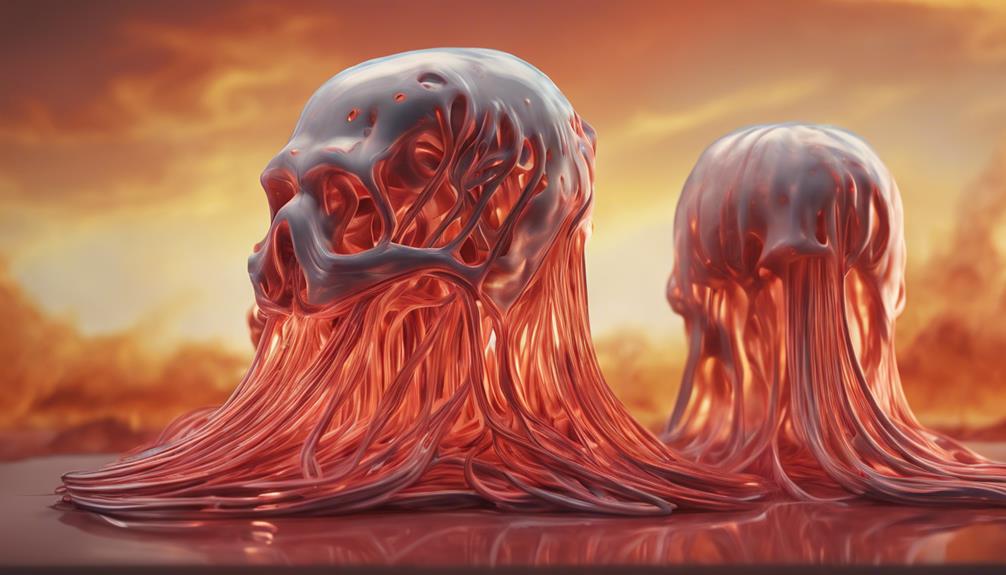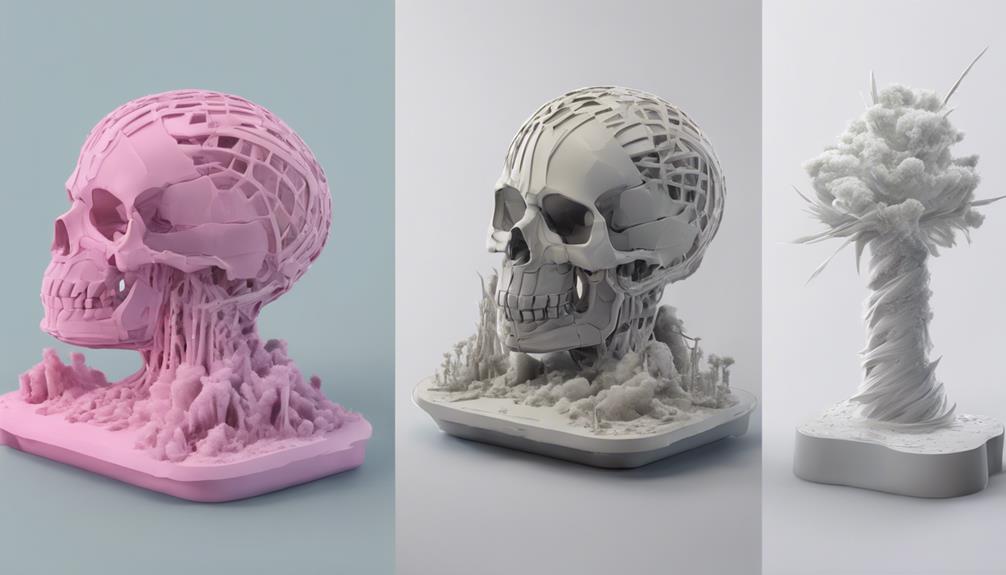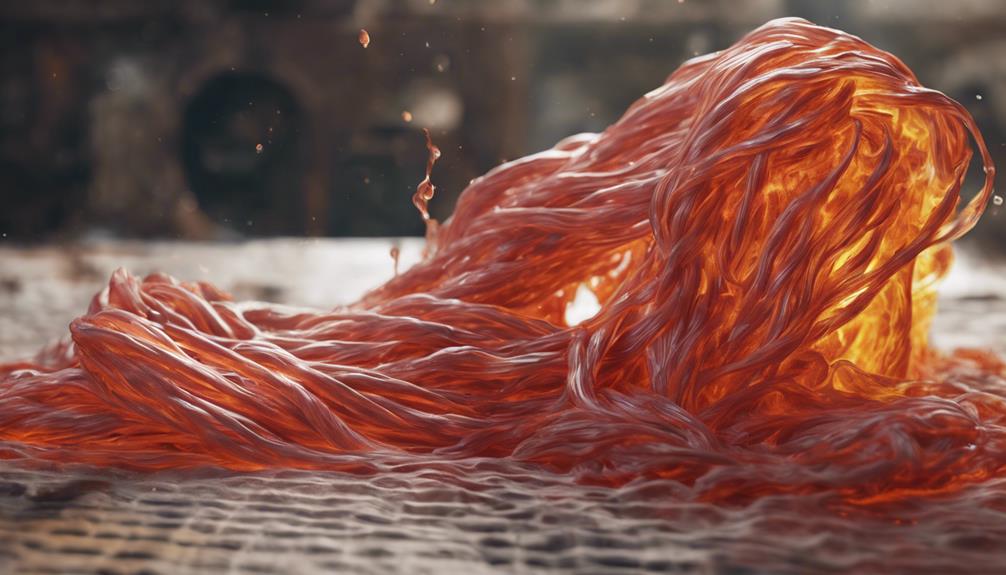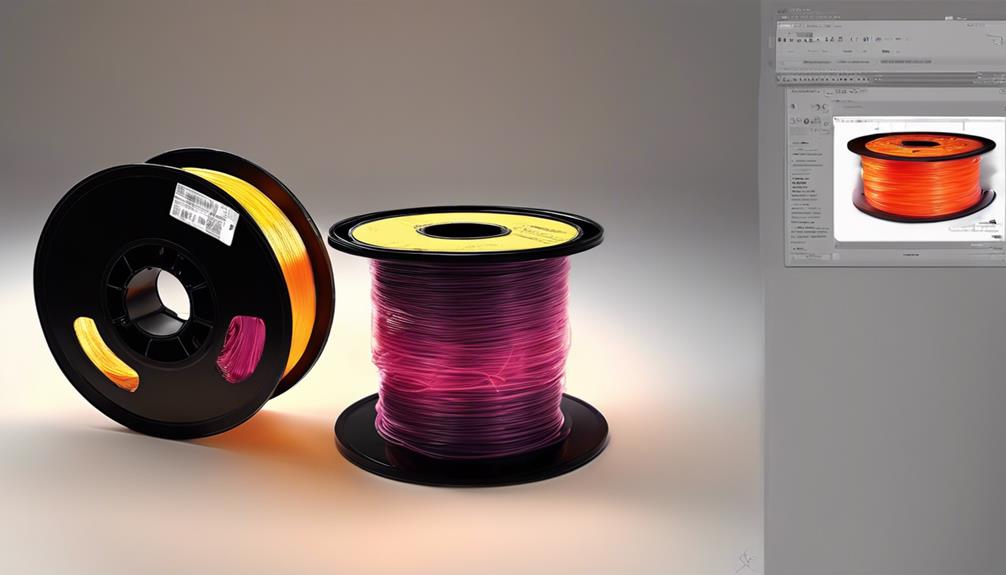In the world of 3D printing, the battle between PLA and heat resilience is a critical consideration for creators. As PLA gains popularity for its user-friendly nature and eco-conscious qualities, its limitations in high-temperature environments raise significant questions. How does PLA fare against the heat stress test, and what are the implications for its practical applications? Understanding the delicate balance between filament properties and environmental demands is crucial to achieving best results in 3D printing projects. Let's explore the nuances of PLA's survival in the face of heat challenges and the alternatives that promise greater endurance.
PLA's Heat Resistance and Limitations

With its melting temperature ranging from 160°C to 180°C, PLA demonstrates limited heat resistance and is susceptible to degradation under high temperatures. This makes PLA less suitable for applications requiring resistance to heat or exposure to direct sunlight.
When subjected to elevated temperatures, PLA can soften, deform, or even melt, leading to a loss of structural integrity. As a result, PLA is not recommended for outdoor use or applications where it may be exposed to significant heat sources.
Understanding the constraints of PLA's heat resistance is crucial for selecting the appropriate filament for specific 3D printing projects, ensuring the durability and functionality of the final printed objects.
Impact of UV Exposure on PLA
In addition, exposure to ultraviolet (UV) radiation greatly affects the durability and performance of PLA filament in various applications. PLA is not UV-resistant and degrades when exposed to sunlight. Prolonged UV exposure causes PLA to become brittle and weak, accelerating its degradation and color fading.
Unlike PETG, which performs decently outdoors and is resistant to direct sunlight exposure, PLA is more suitable for aesthetic models rather than functional parts due to its vulnerability to UV rays. The impact of UV rays extends to the color pigments in PLA prints, emphasizing the importance of considering UV exposure when selecting filaments for specific projects.
Additionally, ASA stands out as a lightweight and highly UV-resistant alternative to PLA for applications requiring durability against weather exposure.
Comparison: PLA, ABS, and PETG

When evaluating the properties of PLA, ABS, and PETG filaments for 3D printing applications, it is essential to consider their respective heat resistance and durability characteristics.
- PLA:
- Known for its ease of use and environmental friendliness.
- Has a lower heat resistance compared to ABS and PETG.
- Suitable for aesthetic models but not recommended for functional parts exposed to heat.
- ABS:
- Offers higher heat resistance than PLA.
- Known for its strength and durability.
- Suitable for functional parts that require resilience to higher temperatures.
- PETG:
- Combines the ease of printing of PLA with the durability of ABS.
- Exhibits better heat resistance and impact strength than PLA.
- Ideal for functional parts that need to withstand moderate heat and mechanical stress.
Importance of Filament Selection
When evaluating the selection of filaments for 3D printing applications, understanding the heat resistance and durability characteristics of materials like PLA, ABS, and PETG is crucial. Each filament type offers unique properties that cater to specific needs and environments. Here is a comparison table highlighting key factors to assess when choosing between PLA, ABS, and PETG:
| Filament Type | Heat Resistance | Durability |
|---|---|---|
| PLA | Low | Moderate |
| ABS | High | High |
| PETG | Moderate | High |
Enhancing Heat Resistance of PLA

To bolster the heat resistance of PLA filament, consider incorporating annealing techniques to fortify its structural integrity and thermal tolerance.
- Annealing Process: Heat PLA prints at 60-160°C for 30-45 minutes to enhance strength and heat resistance.
- Additives and Blends: Utilize special PLA blends or additives to improve heat resistance.
- Temperature Control: Avoid exposing PLA prints to high temperatures for extended periods to maintain their integrity and prevent deformation.
These methods can help enhance the heat resistance of PLA, making it more suitable for applications where higher temperatures are a concern.
Annealing for Improved Performance
With the application of annealing techniques, the structural integrity and thermal tolerance of PLA filament can be greatly strengthened, enhancing its overall performance.
Annealing PLA at 60-160°C for 30-45 minutes increases the strength and heat resistance of 3D printed objects. This process promotes the growth of large crystal structures within the plastic, allowing stresses to be distributed more evenly.
Additionally, annealing helps to smooth surfaces, fill in gaps, and facilitates post-processing tasks. By undergoing annealing, PLA prints can exhibit improved mechanical properties and withstand higher temperatures, making them more suitable for functional applications.
Proper annealing practices can significantly boost the performance and longevity of PLA filament-based creations.
Selecting the Right Filament for Longevity

After understanding the impact of annealing on strengthening PLA filament, the focus now shifts to selecting the most suitable filament for ensuring longevity in 3D printed objects.
- Consider the Application:
- Evaluate whether the object will be exposed to heat, UV light, or outdoor conditions.
- Choose the Right Material:
- Opt for filaments like ABS, PETG, or ASA for better heat and UV resistance.
- Review Filament Specifications:
- Check the filament's heat deflection temperature and UV resistance ratings before printing.
These considerations will aid in selecting the appropriate filament to enhance the durability and lifespan of your 3D printed creations.
Frequently Asked Questions
Can PLA Prints Withstand Direct Sunlight Exposure?
PLA prints cannot withstand direct sunlight exposure as PLA is not UV-resistant. Prolonged sunlight exposure can cause PLA to become brittle, weak, and degrade. Consider alternative filaments like PETG or ASA for outdoor applications requiring UV resistance.
How Does Annealing Affect the Strength of PLA Objects?
Annealing PLA objects can greatly enhance their strength and heat resistance. This process involves heating the printed item to 60-160°C for 30-45 minutes, resulting in improved structural integrity, increased heat tolerance, and smoother surfaces, making post-processing easier.
Is PETG More Uv-Resistant Than ABS Filament?
PETG offers superior UV resistance compared to ABS filament. Its composition enables decent outdoor performance, resisting direct sunlight exposure well. PETG's smooth surface reflects UV radiation effectively, preventing brittleness and color fading, making it a preferred choice for such applications.
Can PLA Be Used for Functional Outdoor Parts?
PLA is not recommended for functional outdoor parts due to low heat resistance and susceptibility to UV degradation. Alternative filaments like ABS, PETG, or Polycarbonate with higher heat resistance and UV stability are more suitable choices.
What Factors Determine the Best Filament for Heat Resistance?
Factors determining the best filament for heat resistance include glass transformation temperature, UV resistance, and material composition. Polycarbonate and ABS offer high resistance. Consider UV exposure, heat levels, and application to select suitable filaments for durability.
Conclusion
In the battle of filaments, PLA's weakness under heat is like a fragile flower wilting in the scorching sun. While its beauty is undeniable, its vulnerability to high temperatures cannot be overlooked.
To guarantee longevity and durability in functional parts, one must look to the sturdier and more resilient options of ABS or PETG. Selecting the right filament is essential in building a strong foundation that can withstand the test of time.
Choose wisely, for the heat will always reveal the strength within.